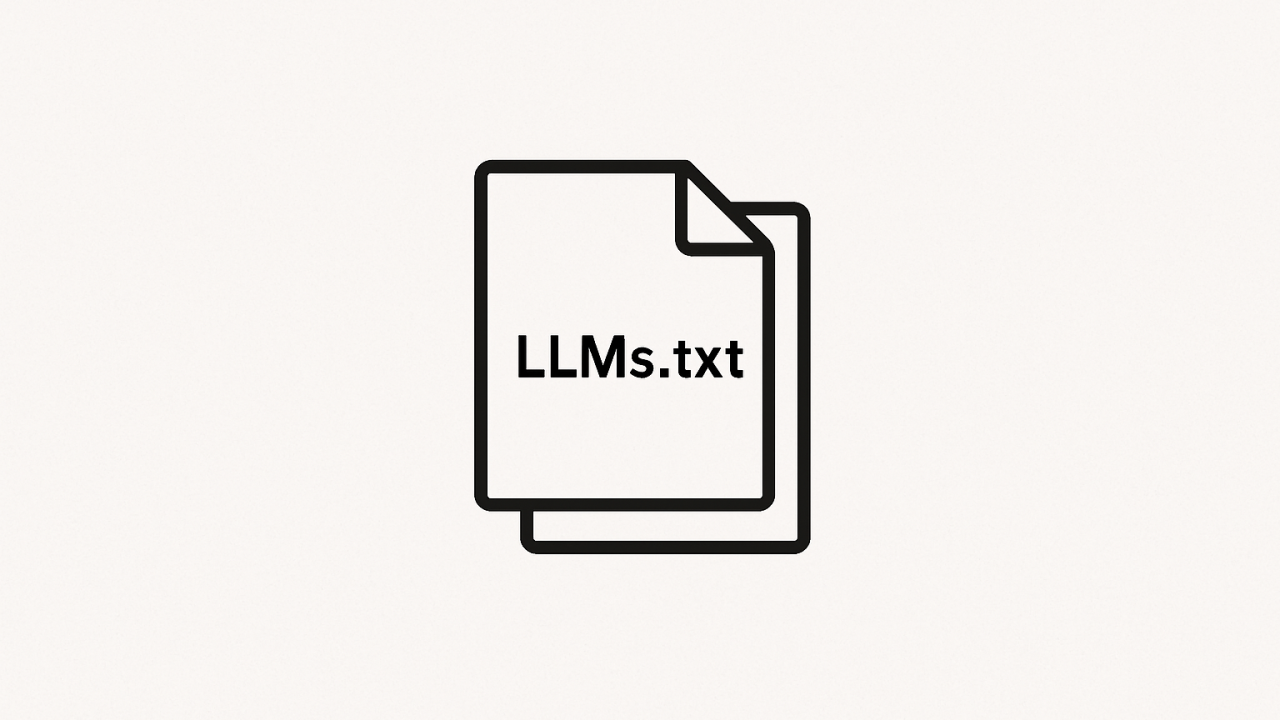The digital landscape cannot deny today the omnipresence of artificial intelligence. This is even more true when it comes to the search for information. So what can a brand do to face this change and gain presence on search engines but also on artificial intelligences such as ChatGPT? This is where a technical element comes in: the LLMs.txt.
At first glance, this file could pass for a simple text document. In reality, it constitutes a key piece in the interaction between content creators, website administrators, AI technology developers, and language model providers such as OpenAI, Google, Anthropic, or even Mistral AI.
The LLMs.txt file is an exclusion or authorization protocol specifically designed for Large Language Models (LLM). It follows in the continuity of robots.txt, well known in the field of SEO. But while robots.txt is aimed at search engines, LLM.txt targets generative AIs that explore, analyze, synthesize, and reformulate public content from the web. As these intelligences take up more and more space in usage, the question of the governance of accessible data becomes crucial.
Can we let AIs index everything? What rights does a publisher hold over their content once published? Is it legitimate for commercially oriented models to exploit articles, blog posts, or publications without explicit consent? It is within this tangle of legal, ethical, and technical issues that the LLMs.txt file asserts itself.
This article offers an in‑depth reading of LLMs.txt: its origin, its uses, its limits, and its implications in web publishing strategies. Because understanding this small file also means understanding the delicate balance between technological innovation and respect for digital property in an era shaped by AI.
Genesis of a strategic file
The concept of LLMs.txt is relatively recent. It emerged in response to a growing concern: the unsupervised collection of textual data by increasingly powerful AIs. While most major models have been trained on data massively sourced from the web (Wikipedia, forums, press articles, blogs, social networks), few mechanisms allowed publishers to oppose this harvesting.
Just like the creation of the robots.txt file in the 1990s to regulate the exploration of web pages by search engines, the tech community and some AI platforms began to propose an alternative dedicated to LLMs. LLMs.txt is based on a simple principle: to offer an explicit channel to authorize or refuse access to certain AIs to web content.
Initiatives such as those by Hugging Face, OpenAI, or Common Crawl accelerated the adoption of LLMs.txt by recognizing it as a valid exclusion signal during the training phase. The objective? To create a minimum of transparency in a technological field where opacity is the norm.
LLMs.txt vs Robots.txt: what differences?
While LLMs.txt clearly draws inspiration from the functioning of robots.txt, it does not replace it. Robots.txt is a recognized standard, respected (but not mandatory) by search engines such as Googlebot, Bingbot, or Baiduspider. It allows, directory by directory, the indication of zones to exclude from crawling.
This one, however, is not addressed to search engines. It directly targets AI agents associated with language models. For example, you could authorize Googlebot to index your site for classic SEO while blocking GPTBot (OpenAI’s crawler) via LLM.txt. This decoupling is fundamental.
The LLMs.txt file can also specify which parts of the site are concerned, for which AI agents, and in what context (indexing, training, summarization). However, unlike robots.txt, it does not yet benefit from a consensus or an RFC (Request for Comments) validated by web standards organizations.
In short, it is an emerging tool, at the crossroads between technical convention and political signal.
A lever of control for web publishers
For publishers, this file represents a strategic lever. It allows them to better control what can be absorbed by generative AIs. In a context where content monetization is becoming difficult, and where AI‑generated answers sometimes divert audiences from the original sites, this possibility to filter access becomes crucial.
Take the example of an independent online media outlet. It invests in producing high‑quality content. Yet, an AI can reformulate this content today and provide its essence in a direct response (as in Google SGE or ChatGPT Browser), without generating a click to the source site. This silent capture weakens the media’s economy.
By configuring an LLMs.txt file, this publisher can indicate that it refuses access to its content for training or indexing by certain models. In doing so, it regains control over its digital asset. It is also an educational tool, forcing AI actors to take into account the signals issued by data producers.
Legal issues and regulatory grey areas
The legitimacy of this file relies on a voluntary principle: it does not constitute a legal obligation but an ethical and technical signal. This vagueness is symptomatic of the grey area in which generative artificial intelligence still operates.
In Europe, projects such as the AI Act are trying to better regulate the processes of training models. The text notably provides that AI developers must keep records of the data used and respect copyright. In the United States, the Copyright Office has opened a series of consultations on the use of protected works in AI training.
However, legislation struggles to keep pace with the development of technologies. It therefore imposes itself as a self‑regulation tool, in the absence of a clear legal framework. It allows those who wish to express an explicit refusal, even if nothing forces actors to respect it. That is the whole issue: making this file a socially accepted norm before it becomes legally binding.
Limits, criticisms, and perspectives
Although the LLMs.txt file may seem promising, it is not free from limitations. First, its effectiveness relies on the good faith of AI actors. Nothing prevents an unidentified crawler from bypassing these directives. Second, not all sites have the technical resources to implement or maintain this file.
Another criticism: some believe that this system reinforces the power of major platforms. By agreeing to respect LLMs.txt, they position themselves as ethical guarantors while leaving the responsibility to publishers to protect themselves. This amounts to reversing the burden of proof and transferring the technical effort to smaller actors.
Despite this, there are many avenues for development. We can imagine:
- native integrations into CMS (like WordPress, Webflow, or Shopify),
- extensions to detect AI crawlers,
- AI compliance labels,
- And much more.
Market pressure and user expectations could also favor wider adoption.
Conclusion: a discreet marker in an ocean of AI
The LLMs.txt file will not save editorial sovereignty on the web by itself. But it marks a first attempt to regain control over the circulation of content in the age of artificial intelligence.
In a context where AI‑generated answers are becoming alternatives to search engines, and where usage is shifting toward conversational interfaces, mastering what we make accessible becomes strategic. Every company, every publisher, every content creator must ask: to whom do we grant access? Under what conditions? And with what consequences?
This file embodies a desire for negotiation. It does not block technological progress but proposes a framework. It does not hinder AIs but seeks to give them rules of engagement.
And that is perhaps its greatest value. The value of opening a path between two extremes. That of wild data capture on one side and total blocking on the other. This helps build a web where technology also respects the voices of those who produce, document, write, and inform.
It must also be recalled that large AI models, whether ChatGPT, Perplexity, or Gemini, have been largely built on data sourced from the web. A significant portion of their knowledge is based on content indexed by Google. The nature of these sources, the way models were trained, and the relevance of the answers provided depend directly on this. An LLMs.txt then becomes an essential regulatory point to influence the quality, equity, and legitimacy of this immense knowledge base in construction.
To learn more about this topic and better master the use of AI in marketing and communication, contact us.






